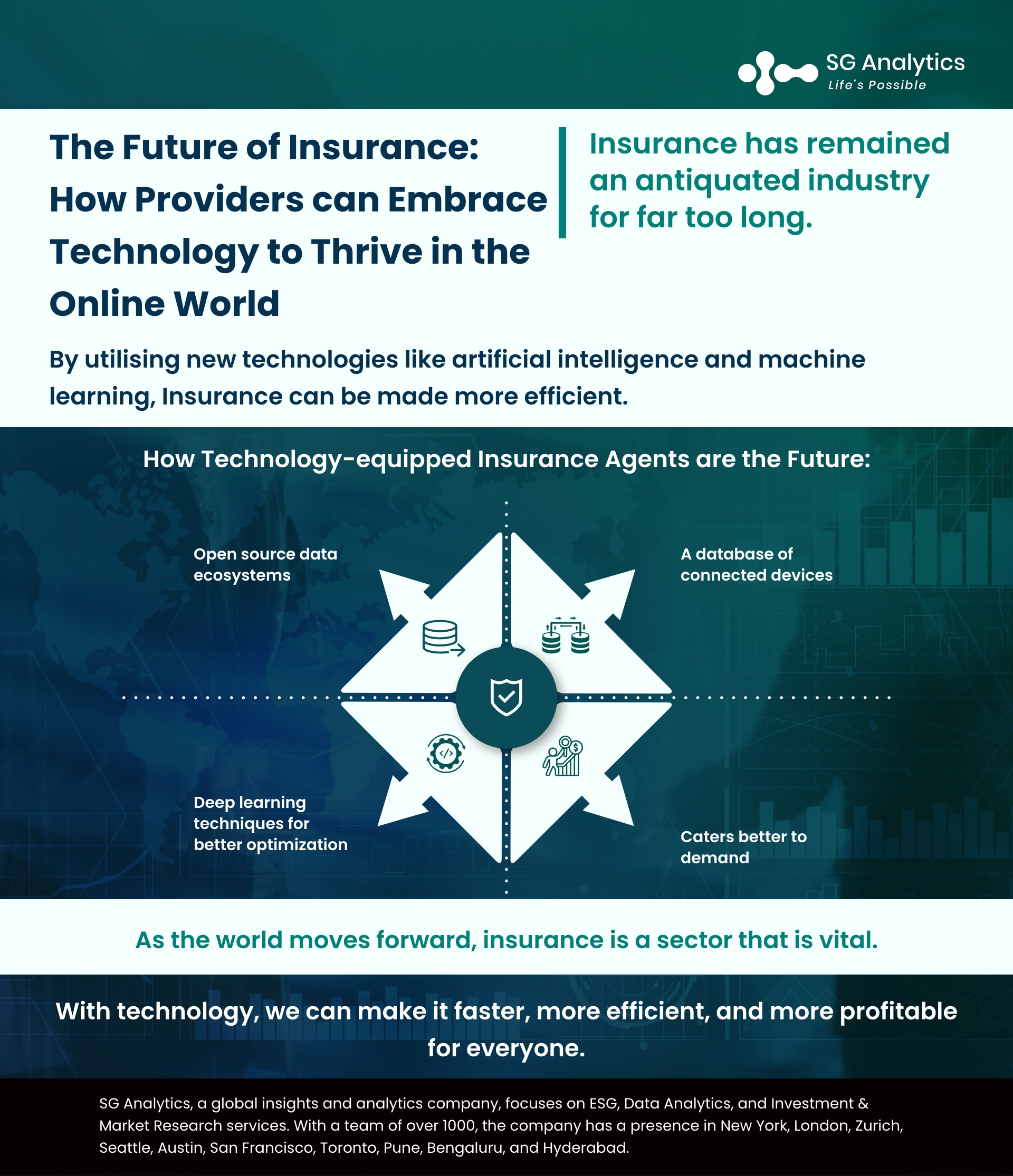Insurance has always had something of a negative perception around the world. Rather than something that people wanted to spend on, it was more of a necessary evil that most had to come to terms with. This ambivalence towards insurance is understandable as it has a reputation for staying antiquated and refusing to get with the times. However, as customer expectations rise and technology advances, it becomes increasingly important to foster innovation in the field.
In a survey done by PwC, 41% of policyholders claimed they chose to look elsewhere for insurance when they realized that their providers lacked digital capabilities. With technology making its rounds in facilitating convenience in different sectors, it is a fair expectation for consumers to have it to do the same in insurance.
Taking that into consideration, a big part of this reputation that insurance has is also dated. In reality, many insurance companies have adopted newer, more technology-based methods. Furthermore, the insurance sector has also seen a boom in AI-related services that make insurance fairer and more realistic for providers and consumers.

Read More: The Sustainability Investments Revolution & its Impact on Climate Targets
Open-Source Data Ecosystems
For decades, industrial equipment has come with in-built sensors that alert the user of any maintenance requirements and vulnerabilities. This has also been common in sports, where Formula 1 cars are equipped with hundreds of different sensors for the team to monitor performance and oncoming challenges. Similarly, professional Football players have seen the introduction of more advanced fitness trackers that can detect speed, heart rate, ball tracking, heatmaps, and many others to make practices and match performances easier to analyze.
Eventually, similar technology was introduced to consumer devices as well. Cars that we buy now often come with many sensors for the companies to perform diagnostics when there are issues. However, certain insurers have started to partner with these companies in using that data to get a more realistic estimate of insurance contracts and policies. This means that even if a car is old and worn down, if the user has taken care of it and had it regularly serviced, sensors in the car will be able to show insurance providers that the car is at low risk meaning that the policy buyer will get a more holistic analysis of how much they need to pay.
This is also being prototyped into being applied to health insurance schemes. Users with various health conditions can use health monitors to detect when their condition improves and whether a modification should be made to the policy itself. Some people have criticized having sensitive data shared with providers without one’s permission. However, it is clear that it is a small trade-off for a large benefit.

Read More: Five Personal Finance Startups that are Revolutionizing Fintech
A Database of Connected Devices
With all the different web services people use on a normal day, the databases they have on consumer data are massive. Companies like Google and Amazon are able to compile user data to provide general data insights for a wide array of different applications. For example, Google uses search data as well as analysis of popular YouTube content to aid in advertising in their AdSense service.
A similar application of data can be innovated in insurance. As technology develops at an extremely high rate, the world is constantly seeing the development of entirely new product categories. By utilizing this data, insurers can have a better idea of how valuable certain items are as well as how easy they are to damage. Furthermore, there are luxury options in just about everything, from shoes to even medical trackers. It is difficult for insurance companies to keep up with these changes, and it might be easier for artificial intelligence to create policies based on data that is readily available.
Almost all devices are connected to some larger databank, and it is time insurance starts utilizing that too.

Deep Learning Techniques for Optimization
For a long time, insurance agents had to look up the individual date on each customer. From that, they had to determine how much they were entitled to and how this could be serviced. For the future scenario, many experts have suggested adopting a more automated approach through artificial intelligence and a new branch of machine learning called deep learning.
Deep learning is supposed to be able to analyze, interpret, and make determinations based on data that is available. Many new customer service bots utilize this technology by looking through massive amounts of text data and human writing to respond in a realistic and normal way. Similarly, insurers can use this technology to serve clients. Not only would this be efficient, but it would make it easier to service a much larger volume of clients too. At the same time, reducing labor costs would mean that insurance would be made slightly more affordable to those who need it.
The better resource allocation would also be more economically optimal. This is because less money would be used in processes that do not require it. Moreover, when an economy experiences economic whiplash, insurance is less likely to be impacted as much because it has a more automated process that does not require the payment of a human wage.

Read More: Data & Analytics Strategy: Must-Have Crucial Elements for Decision Making
Caters better to Demand
In the past, insurance was used for a few things. The most common forms of insurance were health, home, and life. However, now it is normal to have auto, auto, and even travel. Although these are the main insurance classes, one can insure just about anything that has value. This means that insurance companies need to adapt to this and look at what products are most likely to be insured.
For example, in Monaco, insurance companies were able to use purchasing data and realize that jewelry items were a massive source of income for insurance. Using this data, they were able to see what kind of jewelry was most common as well as how much it was worth and whether there was a possibility for the pieces to appreciate. This made it more efficient for consumers who had just purchased a new piece of jewelry while the company was able to profit as it realized a gap in the market and was able to make it more accessible to the citizens.

Ensuring Growth in Insurance
With the new start-ups and methods that existing insurance companies are becoming more and more advanced, it is clear that this will help support the burgeoning of the insurance industry even further. Technology that has been used so far has made things more efficient and lowered operation costs on behalf of the insurer. This has made it much more accessible to everyone while also making it more frictionless for those who are looking for it anyway.
Insurance, as mentioned before, is often referred to as a necessary evil. Customers constantly feel like they are overpaying to insure an item because it is unclear why the cost is so high. However, with the help of new tech like artificial intelligence and machine learning, this might be the catalyst to help insurance shake this age-old reputation once and for all.
With a presence in New York, San Francisco, Austin, Seattle, Toronto, London, Zurich, Pune, Bengaluru, and Hyderabad, SG Analytics, a pioneer in Research and Analytics, offers tailor-made services to enterprises worldwide.
A leader in Market Research services, SG Analytics enables organizations to achieve actionable insights into products, technology, customers, competition, and the marketplace to make insight-driven decisions. Contact us today if you are an enterprise looking to make critical data-driven decisions to prompt accelerated growth and breakthrough performance.









